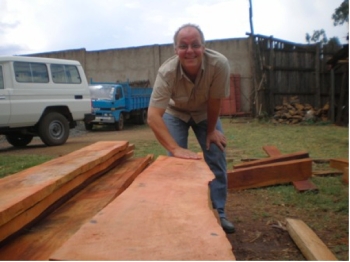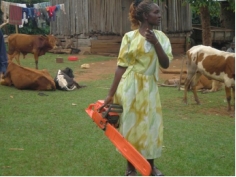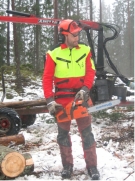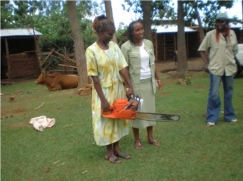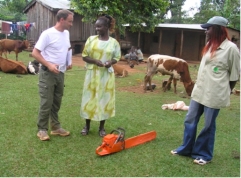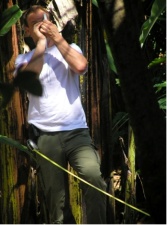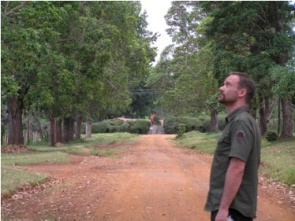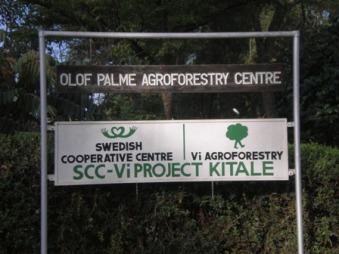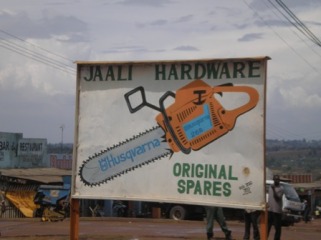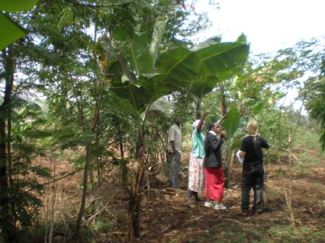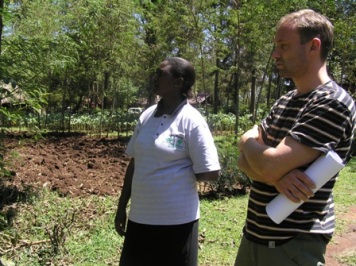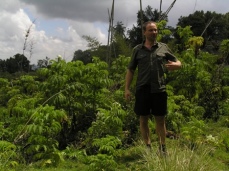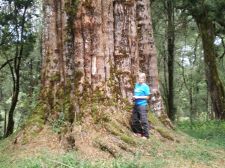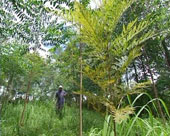One of the most famous runners ever is using an agroforestry system on his farm.
Today we visited the Cherangany district accompanied by divisional head Francis Munene. This district produced the best middle and long distance runners the world has ever seen, for example Edith Masai, Lorna Kiplagat, Moses Kiptanui, Paul Ereng and others. This area was almost totally clear of trees 15 years ago. Take a look at the pictures and compare the right side of the road with the left side. To the right there is an agroforestry plantation and to the left maize. Probably a good comparison to how the whole terrain looked in the past.
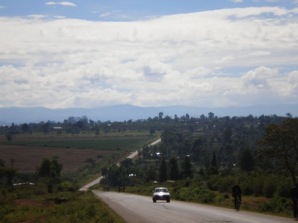
We had the possibility to visit Mr Moses Kiptanuis farm. Unfortunately Moses was not home. But his two small kids and the manager showed us around the farm. They use agroforestry in very successful way. The manager said that Moses is very satisfied with the farm using agroforestry along the guidelines of the Vi-skogen project.
The Kiptanuis farm have crops as tomatoes, maize, sukimavike and fruits as bananas, avocado and passion. The tree species was grevelia, eucalyptus, sespania and more. They also keep cattle and a big plant nursery with a lot of different species. The coming summer VI-skogen in cooperation with the farm will organize a day of forestry and agriculture.
We also passed Paul Erengs farm. We talked to his manager because Ereng work as a running coach in USA. This farm hasn’t started using agroforestry – yet, but Francis promote agroforestry and hopes that this farm will start using a more modern and profitable system in the future.
The last visit for the day were to a running camp organized by Josef Chebet, double Boston marathon winner. There we met Kenyas coming runners; Lorna Kiplagats younger brother Look, eighteen years old and with a personal record on half marathon at 64 minutes.
I was asked by the young runners to arrange their partition in Stockholm Marathon. The deal was to sponsor the trip and and get 15% of the prize money after the costs for flight and accommodation has been deducted. An interesting investment proposal with a touch of gamble.
It is quite easy to understand why these guys are so good in running. They live on an altitude of 2000 meters and practice up to 3500 meters two times every day except Sundays. There are other explanations but altitude and daly practice is what gives them the cutting edge.
